Well over a year into the pandemic, and masks have become a commonplace accessory around the world. They’ve also become a very popular product to sell anywhere from handmade on Etsy to mass-produced on Amazon and everywhere in between.
Masks can be divided into two groups: disposable and reusable. The question is, how can you tell which is which?
If you’re thinking, “just read the label,” it might be worth recognizing that there are two major issues with that.
- The mask itself might not have a label that says one way or the other. Many masks either assume you got the information from a website, or that you knew what you were buying when you bought it, or that some other third-party source of information would tell you when you may or may not have access to it.
- There may be mislabeling involved. Some unscrupulous sellers, particularly importers, might not know or care which kind of mask they’re bringing in and are looking to sell it in whatever way gets them the most money.
There are also issues like “this is a reusable mask that requires replacement filters, but it doesn’t come with filters, and we don’t tell you that you need them” or “this mask is partially reusable but needs to be cleaned in a very specific way to stay functional.” Problems like these make shopping for masks just that much harder.
The Dangers of Reusing Disposable Masks
Before we get into determining whether or not a mask is reusable, it’s worth talking about why this is so important. Why is it critical to know which kind of mask you have and use it properly?
There are a few reasons.
First of all, as you use them, masks build up dirt, grime, contamination, and other nastiness. You’re breathing through the barrier and filter, which means that filter is trapping everything from moisture to bacteria to particles that contain Coronavirus to dirt and dust floating in the air.
As you keep using the mask, it becomes harder and harder to use. Think about a kitchen sink strainer or a sieve; the more you use it, the more clogged the little holes get, so the less gets through it at all. It will be harder and harder to breathe through a mask until it’s either cleaned or replaced.
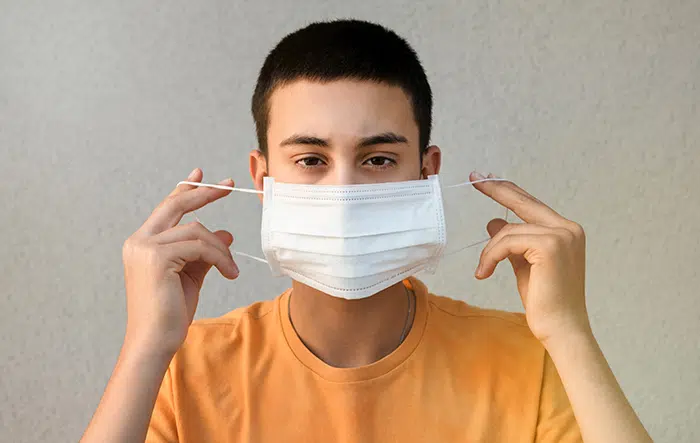
Disposable masks are difficult or impossible to clean. Many of them are meant to be easy to break down and biodegrade, so they can’t hold up to washing them, no matter how gently you do it.
Some disposable masks are also not meant to be used for very long, so their construction isn’t very high quality. They can stretch out, tear, come loose, rip, or otherwise break in a way that reduces or eliminates their utility. If you’re breathing around the mask rather than through it, you’re not getting any benefit from it, after all.
Disposable masks build up contamination as well. The longer you use it without cleaning it – which you can’t do because it can’t be cleaned easily or at all – the more dangerous it is to keep it around. Just touching it and then rubbing your face or eating something can spread contamination that makes you sick, and not just from COVID-19.
Can You Sanitize and Reuse a Disposable Mask?
Now, you CAN clean and reuse a disposable mask, within reason, but only if you have the right tools. It’s also not going to last forever; there’s no way to truly clean a disposable mask; just sanitize it enough to make it safer to use a second or third time.
To sanitize a mask, you generally need either a UV light or vaporized hydrogen peroxide. UV radiation kills germs (and can damage your skin, too, so don’t do this anywhere it can expose you), but it doesn’t do anything against dirt or built-up grime. Likewise, hydrogen peroxide in a vapor can kill germs, break down grease, and get rid of some nastiness. However, if you soak the mask, it’s likely to fall apart.

Either way, you can’t exactly rinse off the mask or get rid of the dirt particles and inorganic compounds that build up. It will still be clogged and harder to breathe through, just a little less dangerous in terms of contamination.
Whatever you do, do NOT try to put your mask in the oven or microwave. You’re likely to burn or melt it, start a fire, damage your appliances, and possibly even hurt yourself. It’s just not worth it to save the few dollars it costs to buy a new mask. It does you no good to sanitize a mask if you burn down your house doing it, right?
Given that the cost of replacing a mask is trivially low now, there’s not much reason to sanitize disposable masks. Get a reusable mask and wash it regularly, and you’ll be well on your way to environmental and financial sustainability.
The Types of Reusable Masks
As far as reusable masks are concerned, they generally come in three forms.
The first is a simple cloth mask. These masks are reusable because they’re made out of washable fabric. They aren’t quite as good at filtering the air as a mask with an actual filter, but they work well enough for most day-to-day purposes. To wash them, all you do is toss them in the washer like you would any other fabric.
The second is a cloth mask with replaceable filters. This is the kind of mask we sell. The cloth mask part can be washed just like other cloth masks, but the filter needs to be discarded and replaced regularly, though not as often as a mask without a replaceable filter.

The third kind are respirators that are made to be more permanent, like these. These are heavy-duty, made of plastic and rubber, and can be cleaned with simple sanitation tools like soap and water or Lysol. They have replaceable cartridge filters and can be used indefinitely. They’re also the most expensive, least comfortable, and most overkill for many situations.
What kind of mask you prefer depends a lot on your use case. Respirators are great for small particulate contamination and are best used in construction, environmental cleanup, wildfire protection, and other use cases. Everyday use like going to work, shopping, or running errands can get by with just a cloth mask, with or without a replaceable filter.
How to Tell if a Mask is Reusable
A mask is generally disposable if it’s not one of the reusable masks above. But, how can you tell for sure what kind of mask you have? You don’t want to discard a reusable mask accidentally, after all. Here are our tips.
Check the mask, packaging, website, and manufacturer for information.
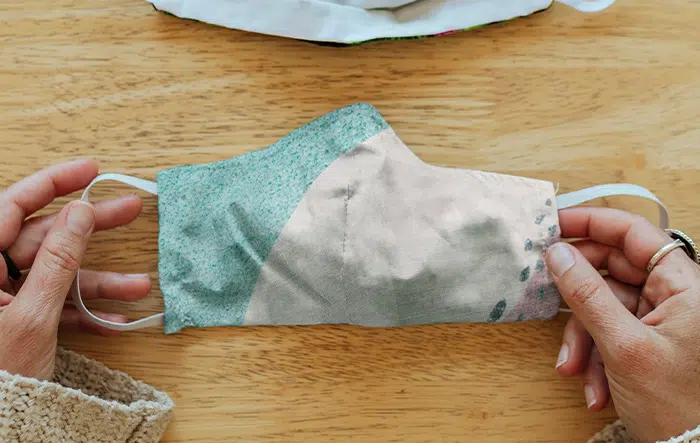
First of all, check out any documentation you can find on your mask. If it’s a mask made by a commercial entity, especially if it’s certified by OSHA/NIOSH, it should have information on it somewhere that you can use to look up what kind of mask it is. It might just say “disposable” or “single-use” on it somewhere, or it might have dedicated information on the websites instead. This can be tricky if you’re getting, for example, KN95s, which are the Chinese equivalent to N95s and are much less well-documented.
Check the construction.
Most disposable masks feel thin, flimsy, or “cheap” because they’re meant to be used once and thrown away. Surgical masks are the biggest example of this. They’re the barest minimum they can be; to be used once and thrown away with a minimum of waste.
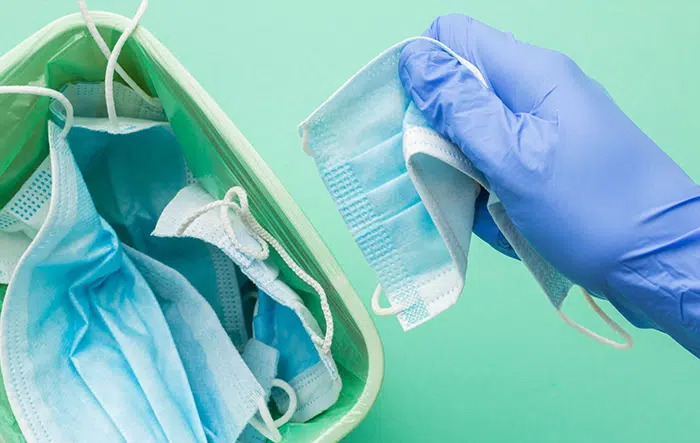
Often, disposable masks are made out of more plastic-like or paper-like materials instead of cloth. Obviously, you wouldn’t treat a heavy-duty respirator like a disposable mask even though it’s made of plastic, but a thin, flimsy, one-piece mask is more likely to be disposable.
Remember, good cloth masks are made out of specific fabrics because those fabrics are the best at filtering while still being comfortable. You’ll be able to tell the difference between these fabrics and the materials of a disposable mask fairly easily.
Check for disposable filters.
Many reusable masks, though not all of them, have a place for a reusable filter. Even many cloth masks today have a space you can add one if you have one. Disposable masks will either have their filter built into them in a way that it cannot be removed or replaced, or they won’t have a filter at all.
Check for care instructions.

Most commercially-made masks, even cloth masks, come with care instructions. If your mask has instructions on how to wash it and dry it, it’s a reusable mask. If it doesn’t, chances are it won’t hold up to that kind of abuse and will need to be replaced instead.
Disposing of Reusable Masks
One of the “secrets” of masks is that most masks are disposable. Even reusable masks can only be reused for so long before they aren’t recoverable. The question is, how many times can you reuse a mask before you should replace it?
At the top end, you have respirators like those we linked above. These heavy-duty masks are made to be used for years, or even indefinitely, with some care. They may need rubber gaskets and straps replaced from time to time, and you’ll obviously need to replace filters regularly, but the core mask itself can be used indefinitely.
Cloth masks with replaceable filters can be used pretty much until they start to fall apart. You want your mask to have a reasonably tight seal against your face, so you’re breathing through the mask rather than around it. As long as it’s still tight, the seams aren’t falling apart, and you don’t need to constantly adjust it; you should be fine to keep wearing it.

Any cloth mask needs to be reviewed every few weeks for damage. You don’t want seams coming apart, holes in the mask, or an earpiece popping off unexpectedly. If your mask is compromised or damaged, it’s not protecting you, so you should replace it.
Flimsier masks will need to be replaced more often; that’s really what it comes down to. Often, you’ll find that cheaply-made masks are worse than handmade masks, but high-quality manufacturing can make a real difference.
And, of course, disposable masks should be discarded after each use, or maybe stretched to two uses each.
Properly Discarding Masks
Anyone paying attention over the last year has noticed the environmental catastrophe that masks have become. It’s hard to go for a walk outside without seeing discarded masks on the ground. Sea life suffers as masks float around looking far too much like edible wildlife. They’re even difficult to clean up for fear of contamination. How can you safely discard a mask?

Sadly, there aren’t really any services you can use for this. Medical masks can go in medical biohazard disposal units, but these are generally only open to hospitals and medical facilities. As an everyday person, you simply need to discard your mask in the trash.
Some agencies recommend bagging up dirty masks or even double-bagging them to avoid contamination. You don’t have to, but avoiding contaminating yourself, animals, waste handlers, and others can be a good idea. If you know you’re sick, definitely bag up the masks and write “contaminated” on the bag before throwing it away.
Whatever you do, don’t throw masks away on the ground, flush them down the toilet, or put them in with your recycling unless you’re specifically instructed to by local facilities.
What’s the Best Mask to Get?
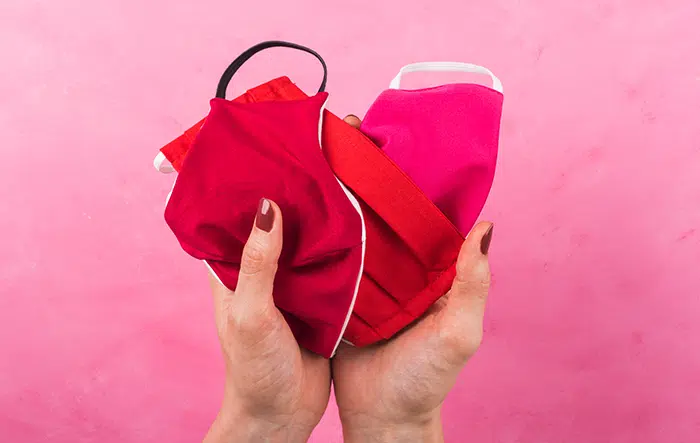
The best mask to wear is the mask you feel most comfortable wearing. We generally recommend a cloth mask with reusable filters since they’re comfortable, protective, and washable. Respirators are overkill unless you have to contend with other environmental hazards, like smoke or mold remediation. Disposable masks are best left for surgical staff and healthcare providers who need to go through them anyway. For everyone else, a decent, well-fitted cloth mask is really all you need.



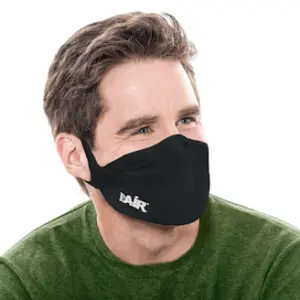
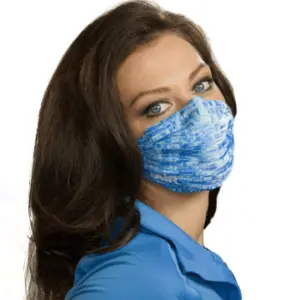

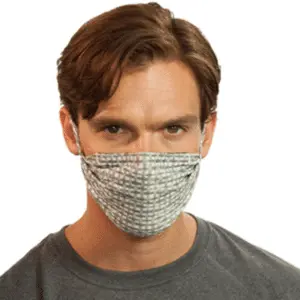

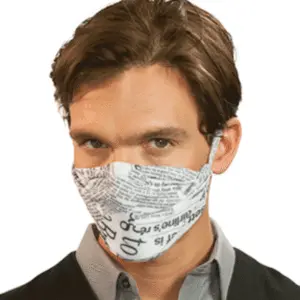



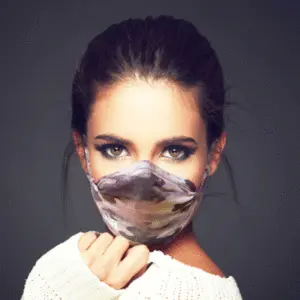
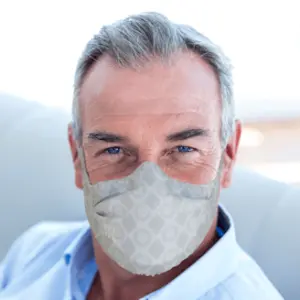






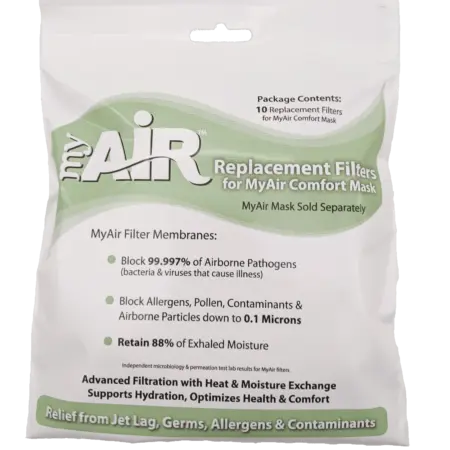
0 Comments